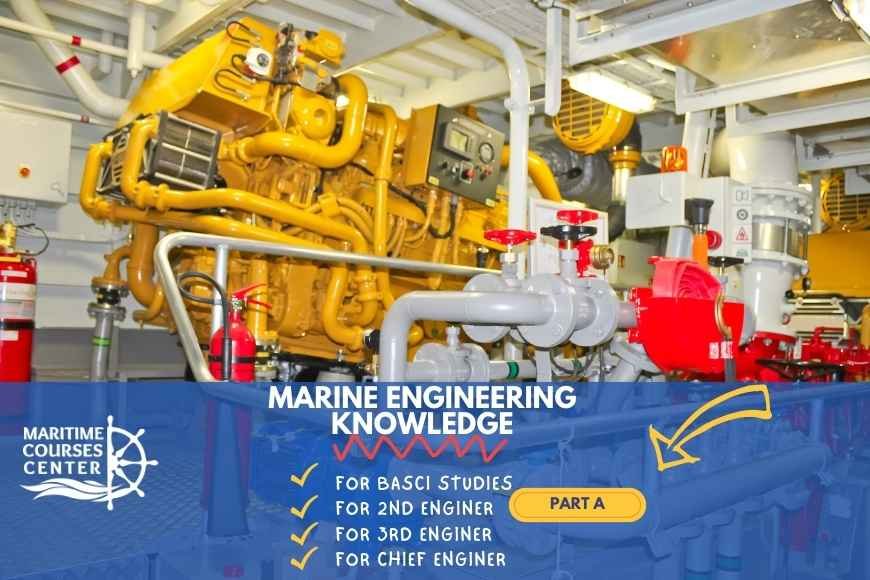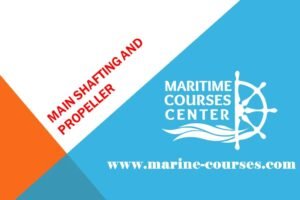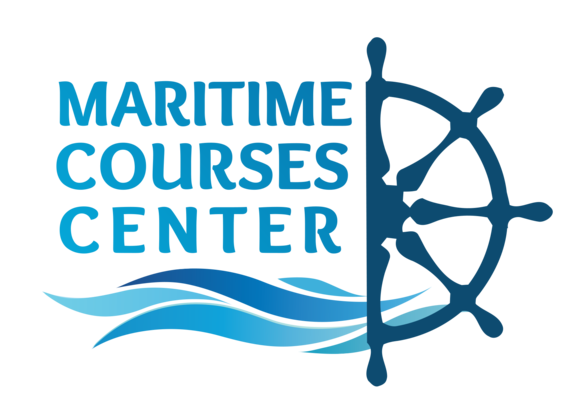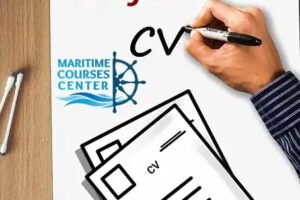
Marine Engineering Knowledge LEC 1 | Marine Courses Center
- Posted by MCC
- Date 21/07/2020
- Comments 3 comments
welcome to Marine Courses Center today we will discuss marine engineering & nautical engineering & naval architecture and marine engineering
Marine Engineering Knowledge
Classification of ships:
1-According to usage:
Cargo ships – passenger ships – service ships – fishing ships – military ships – pleasure boats
The main material which is used for building is considered as classification type such as wooden ships, steel ships, fibre glass boats, aluminium boats, and rubber boats.
Ships’ main engines could be Diesel engines, Steam turbine, Gas turbine, electric, nuclear, or wind driven ships.
Sail boats, jet boats, rowing boats, and ships with propellers.
River ships, coastal ships, overseas ships .
Types of ships:
- General cargo ships: carry dry cargo ( general cargo)
- Container ships: carry containers
- Bulk ships: carry free fall cargo like grain and coal
- Ro-Ro ships ( car carrier ships): carry cars and trucks
- Life stock carriers: carry life animals like sheep, goats, and cows.
- Oil tankers: carry crude oil
- Refrigeration ships : carry refrigerated and frozen cargo.
- LNG ( liquefied natural gas ): carry compressed natural gas in low temperature
- Passenger ships: carry people and their cargo
Engine room layout:
Main Engine and propeller shaft:
Steering Gear:
Electric Generators:
F.W. Coolers:
Sea water cooling pumps:
F.W. cooling pumps:
Air compressors :
Air compressors suck air from atmosphere and compress it into air reservoirs with about 30 bar . This compressed air is used for starting engines and control air system and for other purposes like operating of air driven tools
L.O. pumps:
Ballast Pumps:
Bilge pumps:
Domestic F.W. pumps:
Boilers:
Oily water separator:
Sewage Plant:
F.W. Generator:
Incinerator:
Purifiers:
Heat ex-changers :
1- coolers:
2- Heaters:
Heat ex changers are divided to two kinds :
Purification of fuel onboard:
1- Settling:
F.o. transfers from F.O. storage tanks to F.O settling tank which has slightly listed bottom , heating of the fuel in settling tank will separate some of water and sludge then settle it in bottom of the tank and will be collected from lower end of the tank bottom by bushing spring valve and goes to sludge tank .
2- Purification:
Purifier is a machine consists of many conical shape plates fitted on a shaft turns with high speed in a bowl, the centrifugal force will act to separate heavy particles to the outer area of the bowl then water will be more closed to the center and the oil will in the center and will be transferred to F.O. service tank .
3- filtration:
– diesel oil and lubricating oil can be purified in same way.
what is Classification of ships ?
Cargo ships – passenger ships – service ships – fishing ships – military ships – pleasure boats
2- According to manufacturing materials:
The main material which is used for building is considered as classification type such as wooden ships, steel ships, fibre glass boats, aluminium boats, and rubber boats.
3-according to engine type :
Ships’ main engines could be Diesel engines, Steam turbine, Gas turbine, electric, nuclear, or wind driven ships.
4- According to thrust type:
Sail boats, jet boats, rowing boats, and ships with propellers.
5- According to sailing area:
River ships, coastal ships, overseas ships .
What Are Types of ships ?
Container ships: carry containers
Bulk ships: carry free fall cargo like grain and coal
Ro-Ro ships ( car carrier ships): carry cars and trucks
Life stock carriers: carry life animals like sheep, goats, and cows.
Oil tankers: carry crude oil
Refrigeration ships : carry refrigerated and frozen cargo.
LNG ( liquefied natural gas ): carry compressed natural gas in low temperature
Passenger ships: carry people and their cargo
What Is Engine room layout ?
Engine room is one of these compartments , mostly located aft of the ship.
what is the Main Engine and propeller shaft ?
check our free lectures on our facebook page Marine Courses Center
Check also our related course for OOW and For 2nd Mate and chief Mate
- Ship stability LECT 1
- Ship stability LECT 2
- Celestial Navigation LECT 1 | The Concept Of Celestial Sphere
- Celestial Navigation LECT 2 | Systems Of Coordinate Of Celestial Sphere
- Celestial Navigation LECT 3 | Systems Of Coordinate Of Celestial Sphere
- Celestial Navigation LECT 4 | Systems Of Coordinate Of Celestial Sphere Part 3
- Celestial Navigation LECT 5 | Chapter 3 Diurnal motion Celestial Navigation
- Celestial Navigation LECT 6 | Chapter 4 Annual Motion
if you have any question kindly please contact with me via ICQ and here how to contact with me via ICQ click here
You may also like

propeller shaft ship | marine courses center
welcome to Marine Courses Center today we will discuss ship constructions & ship construction terms & ship structure terminology ship constructions in different types of ships General cargo …
Leave A Reply Cancel reply
You must be logged in to post a comment.
























3 Comments